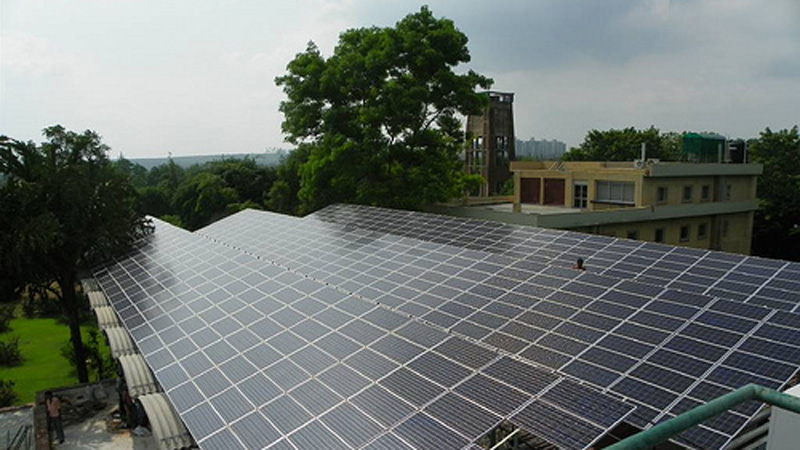India has enough coal plants running or under construction to meet demand until 2026, according to a leading Delhi-based research centre.
By that point, renewables and energy storage could be cheap enough to provide all new capacity, the Energy and Resources Institute (TERI) reckons.
It raises the prospect that one of the world’s fastest-growing carbon emitters may stop adding coal power stations within years and close the last plants around 2050.
“Our report shows that the cost of renewable electricity and its storage is on a steady decline and could stabilise at around 5 rupees per kilowatt-hour,” said TERI director general Ajay Mathur. “This would enable India to move decisively towards renewables for future generation.”
Report: Women’s mosque goes solar in India clean energy push
With an estimated 240 million Indians off the grid (2015 figure) and millions more facing frequent blackouts, India has huge latent energy demand. The government has promised to electrify every village by May 2017 and every household by December 2018.
Experts say there is a long way to go, with a village classed as electrified even if only 10% of its inhabitants have a power connection.
To meet that demand, 50GW of coal plants are being built alongside a targeted 175GW of renewable capacity by 2022. But some existing power stations have been idling as the network infrastructure struggles to keep pace – and air pollution is a growing concern.
“Universal access to electricity is one of the primary aims of the government, and meeting demand is a major facet of this initiative,” said energy minister Piyush Goyal at the TERI report launch in New Delhi on Monday.
“India is also committed to lowering the emissions intensity of its development in line with our [climate pledge] towards the Paris Agreement. We are looking at several initiatives towards making solar energy price competitive to coal.”
Weekly briefing: Sign up for your essential climate politics update
A year ago, a mammoth 420MW solar farm in Rajasthan bid in power at 4.34R/kWh, comparable to the 3-5R/kWh for a new coal plant. Rooftop panels don’t have quite the same economies of scale, but manufacturing costs are falling rapidly. Batteries to store electricity when the sun is not shining will also be critical to end reliance on coal.
In its high renewable scenario, TERI assumes the combined cost of clean power and balancing the grid will reach 5R/kWh by 2027. That pathway is “not a certainty” but a “reasonable probability”, the report states.
Researchers also mapped a low renewable scenario, in which clean energy installations fall short of the target and 267GW of coal is added by 2030.
The World Coal Association said TERI’s analysis was not credible and coal was likely to be the most affordable source of power until 2035.
“India’s energy needs are too huge for any suggestion that it will not need coal in the future,” said the trade body’s CEO Benjamin Sporton.
Initiatives like the International Solar Alliance championed by prime minister Narendra Modi at the 2015 Paris climate summit aim to bring down the costs of shifting to clean energy.
